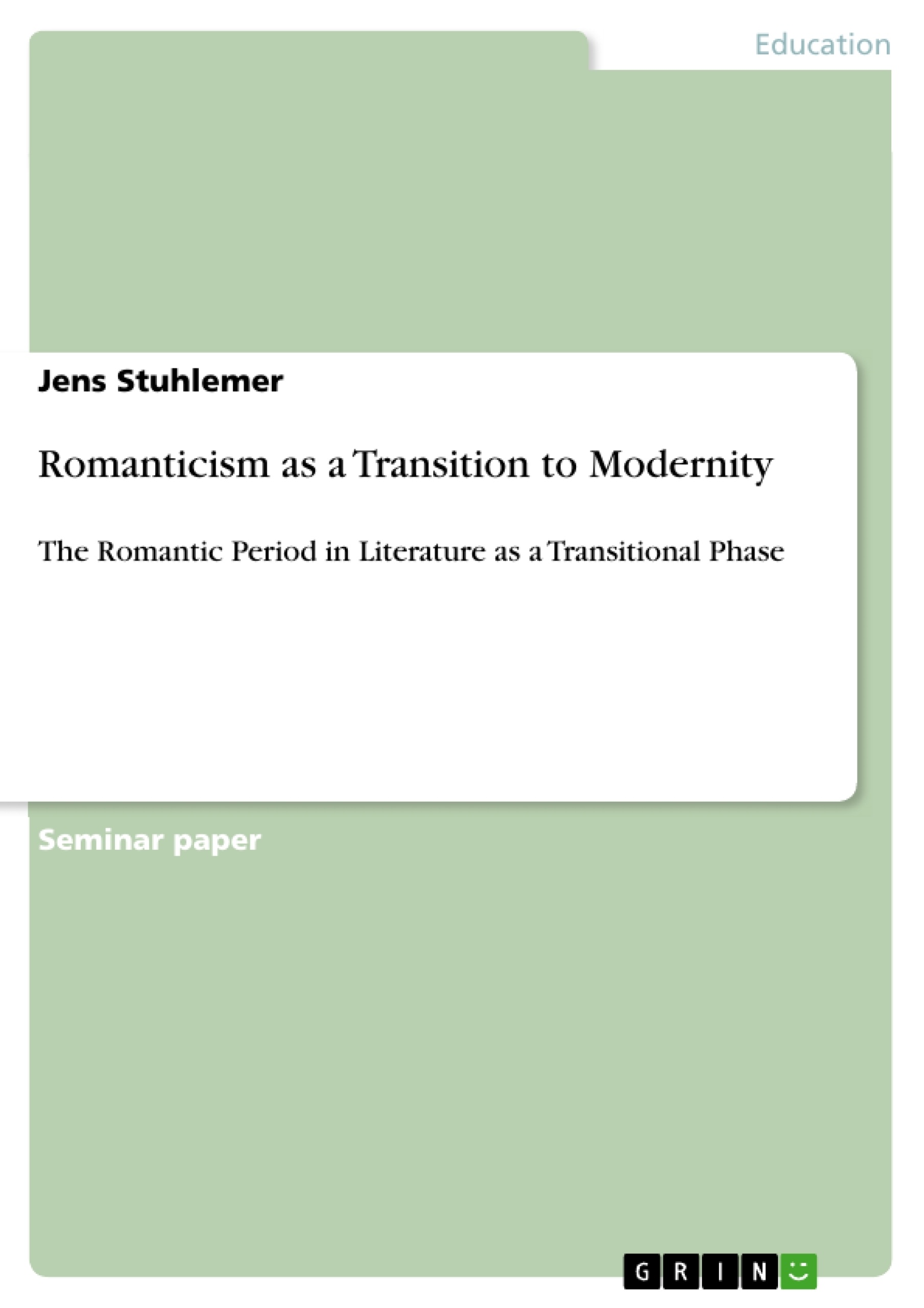This essay aims to show how far the Romantic period in German and English literature can be seen as a transitional phase from the Enlightenment and to the point of Modernity. Given the fact that all consecutive literary periods cannot be divided by mere points in time and certain general features, it is going to be shown that the given eras melt into each other; that earlier periods, in this case first of all Romanticism, but also the Enlightenment, the Classical era, established characteristics which would then be absorbed, redefined or rejected by the succeeding ones, namely Romanticism and Modernity.
The main focus will be to differentiate between, as well as to equalise certain features of Romanticism and Modernity, which must include a deeper look at the past they emerged from. To do so, it will also be necessary to include a high amount of literary criticism, all dealing with the relevant periods and to exemplify the evidences provided by referring to primarily “Frankenstein”, “Die Räuber”, “Die Verlobung in St. Domingo”, and “Peter Schlemihls wundersame Geschichte”.
Table of Contents
- Introduction
- Romanticism
- Modernity
- 2"Undoubtedly one of the key concepts entwined with modernity, and uniquely inflected during the Romantic period, is secularization"
- The Rise and Fall of the Individual
Objectives and Key Themes
This essay aims to demonstrate the extent to which the Romantic period in German and English literature can be viewed as a transitional phase between the Enlightenment and Modernity. The essay will examine how these periods, while distinct, share certain features and how earlier periods influenced those that followed.
- The transition from Enlightenment to Modernity through Romanticism.
- The influence of the Enlightenment, Classical era, and Romanticism on subsequent periods.
- Key features and characteristics of both Romanticism and Modernity.
- The role of secularization in shaping both Romanticism and Modernity.
- The rise and fall of the individual within the context of social structures and capitalist ideologies.
Chapter Summaries
- Introduction: This section introduces the essay's purpose, which is to analyze Romanticism as a transitional phase between the Enlightenment and Modernity. It highlights the importance of understanding how these periods intersect and influence each other, setting the stage for the subsequent discussion.
- Romanticism: This chapter delves into the characteristics of the Romantic period, highlighting its focus on individualism, emotional intensity, and the rejection of Enlightenment rationality. It explores how Romantics sought to free self-expression and challenged the limitations of classical models.
- Modernity: This section examines the key shifts that led to the emergence of Modernity, both historically (new forms of social organization, technology, and science) and philosophically (secularization and the rise of reason). It discusses the Enlightenment's role in shaping modernity while arguing for the significance of Romanticism in the development of Modernity.
- 2"Undoubtedly one of the key concepts entwined with modernity, and uniquely inflected during the Romantic period, is secularization": This chapter focuses on the concept of secularization, demonstrating how its origins can be traced back to earlier periods and how Romanticism played a significant role in its development. It emphasizes the importance of understanding secularization as an ongoing process rather than a discrete event.
- The Rise and Fall of the Individual: This chapter delves into the concept of the individual within the context of Romanticism and Modernity, exploring how the changing social and economic structures influenced individual identity and agency. It uses literary examples such as Frankenstein and Die Räuber to illustrate these themes.
Keywords
This essay explores key terms and concepts associated with the transition from Enlightenment to Modernity through Romanticism. These include secularization, individualism, rationality, imagination, sensibility, social structures, capitalism, and the role of literature in shaping social and cultural change. The essay analyzes these concepts through the lens of key literary works such as Frankenstein, Die Räuber, Die Verlobung in St. Domingo, and Peter Schlemihls wundersame Geschichte, providing a nuanced understanding of the complex relationships between these historical periods and the emergence of the modern mind.
- Quote paper
- Jens Stuhlemer (Author), 2014, Romanticism as a Transition to Modernity, Munich, GRIN Verlag, https://www.hausarbeiten.de/document/379267


